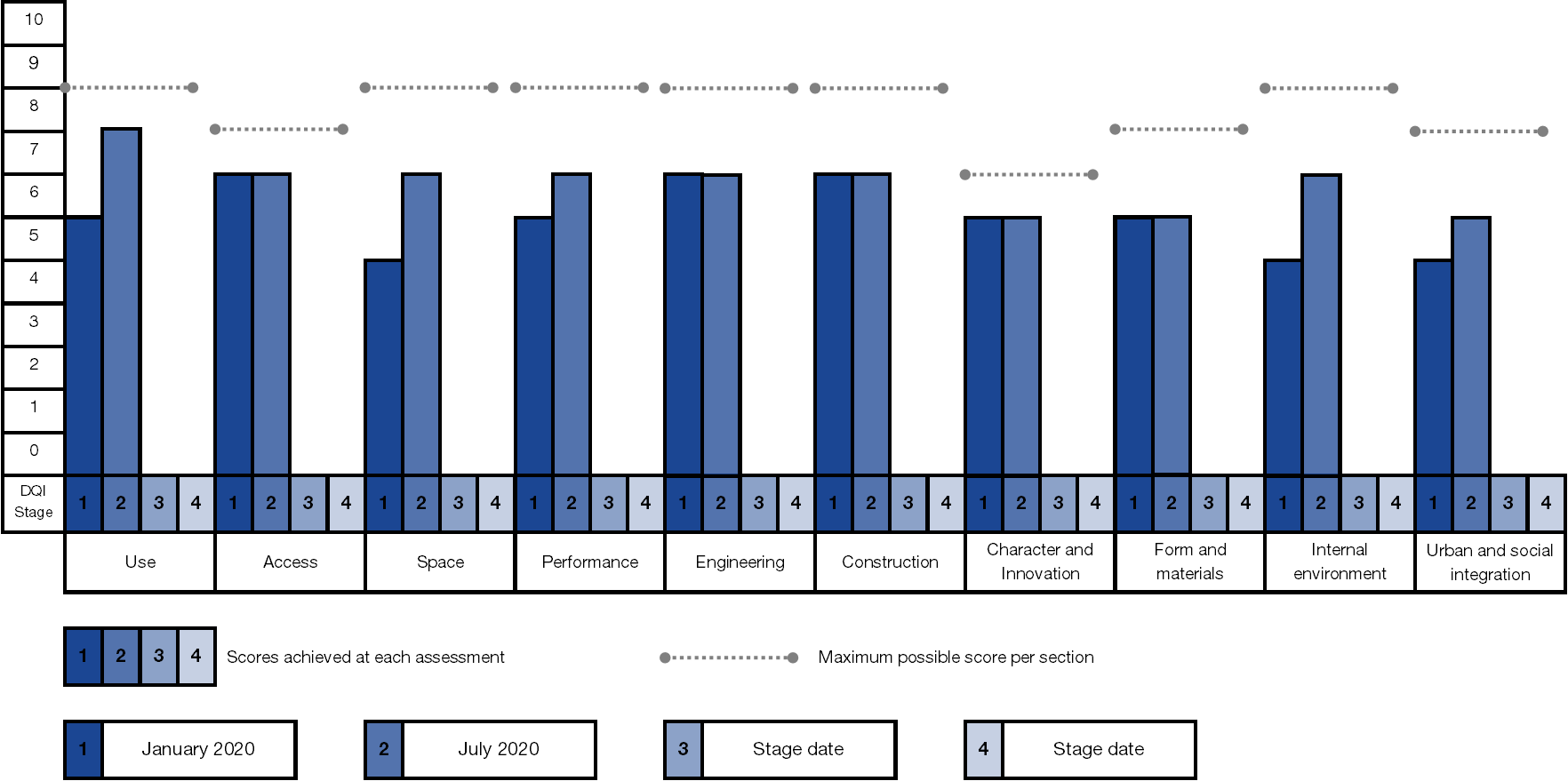
Pontefract Hospital, Wakefield, UK
In 1999, there were no metrics for assessing and improving the design and construction of buildings, whether new or being refurbished. The Construction Industry Council (CIC) decided to address this and, 3 years later, the Design Quality Indicator (DQI) was launched. The DQI was designed to assess every aspect of design quality at each stage of the design process – from inception to post-occupancy analysis – by involving a wider group of stakeholders in the design of buildings.
A subsequent bespoke version for the education sector, the DQI for Schools, was launched in 2005. This was followed by the DQI for Health (DQIfH), commissioned by the Department of Health and Social Care – then the Department of Health – which was launched by the NHS Trust Development Authority, now NHS Improvement, and NHS England’s Project Appraisal Unit in 2014.
The DQIfH was developed as a design quality evaluation tool for all types of healthcare project, both new builds and refurbishments, and follows the NHS’s business case process through the strategic outline case, outline business case, full business case, construction, and post-occupancy evaluation.
“The DQI was designed to assess every aspect of design quality at each stage of the design process by involving a wider group of stakeholders in the design of buildings”
Design Quality Indicator for Health 2 (DQIfH2) launched
In September 2020, the Design Quality Indicator for Health 2 (DQIfH2) was launched. It was developed in response to the changing needs of the healthcare sector, the NHS’s business case process, and DQI’s close collaboration with NHS England and NHS Improvement in supporting high-quality clinical care and a positive environment for patients, visitors and staff.
DQIfH2 allows healthcare organisations and their key stakeholders to engage earlier in the consultation and design process for all types of healthcare building. The DQI team and DQI facilitators are in touch with clients at stage 0, client orientation – the earliest point in the process. The tool and the DQI questionnaire – a comprehensive, non-technical set of statements that measure all the factors applicable to the design quality of most buildings – have been updated to perform better with the latest NHS England and NHS Improvement requirements. The updates, including new areas for consideration and discussion and a new graph for following the progress of the project, are aligned to the current business case process while also being adaptable for use on accelerated project programmes.
- carbon reduction and sustainability
- infection prevention and control
- fire safety
- planning
- budget
- travel plans.

Figure 1. The DQIfH2 output graph
DQIfH2 aims to improve the briefing process, enable a consensus view among stakeholders, set targets and track design quality at key stages of a building’s development (see Figure 1). The tool helps the communication between demand-side – the client – and the supply team; supports monitoring and reviewing of design aspirations throughout the process; enables benchmarking; and allows feedback to be incorporated into subsequent stages, ensuring a cohesive and efficient project.
A design audit trail is provided, while benefit and assurance DQIfH2 workshop stages match the NHS business case and project programmes, and reports are produced to provide assurance at each approval stage. DQIfH2 requires the use of independent facilitators who are trained and accredited by the CIC to run workshops and write reports.
The CIC is keen to continue to work closely with NHS England and NHS Improvement to ensure ongoing improvement in coming years.
“DQIfH2 aims to improve the briefing process, enable a consensus view among stakeholders, set targets and track design quality at key stages of a building’s development”
Makis Peppas is DQI manager at the Construction Industry Council
Contact Makis: Email
Related competencies include: Managing projects, Programming and planning
